Baruch she-asah li nes ba’makom hazeh.
“Blessed is the One who performed a miracle for me in this place.”
Yisroel Brownstein, a 40-year-old clinical psychologist, could barely make it through the words of the blessing as he stood in a cornfield in Sioux City, Iowa, last July. Thirty-one years earlier, the then nine-year-old boy lay in the same cornfield, alone, hovering close to death.
He was not alone now. On the day when Yisroel’s life shattered to pieces along with the DC 10 he was riding, he made a friend who would stand by him through the difficult years that followed: Rabbi Mendel Katzman, or, as Yisroel calls him, the “Plane Crash Rabbi.”
For more than three decades, Yisroel resisted returning to the crash site that took the lives of 112 of his fellow passengers, but this year, at the rabbi’s urging, he mustered up the emotional courage. “I could never bring myself to do it. But the rabbi made all the arrangements to make it possible. Being back here is too powerful for me to put into words,” he told Lubavitch International.
“The trauma colors every part of the survivors’ lives,” says the rabbi, who stayed in close contact with Yisroel all these years. He felt it would be healing for Yisroel to return to the site, where he could mourn the tragedy, and also express gratitude for his miraculous survival. “Yisroel and I talk often about the ‘why me?’ about his purpose in life, why he was chosen to survive and so many others weren’t.”
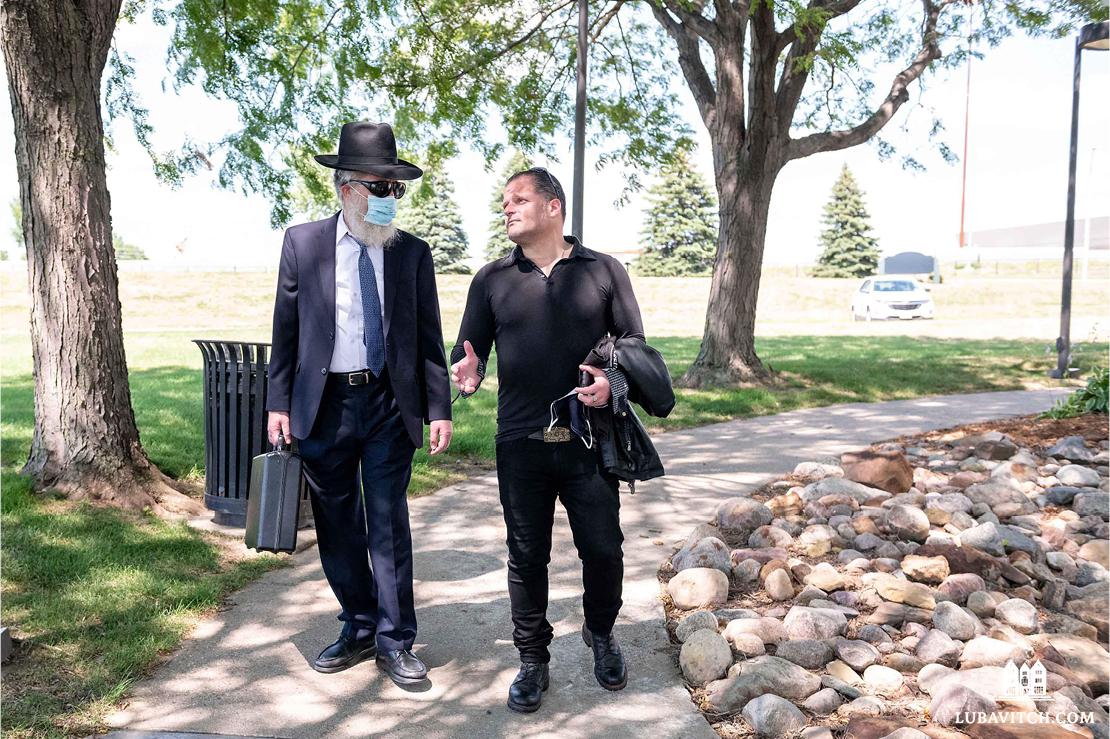
“I Remember Every Second”
United Airlines flight 232 with 285 passengers, including 52 children, and 11 crew members, departed from Stapleton International Airport in Denver, Colorado, at 2:09 p.m. on July 19, 1989. The flight’s destination was Philadelphia with a stop in Chicago. Yisroel, then a third grader, known affectionately as Sruli, was traveling as an unaccompanied minor. His parents, Rabbi Avrohom and Chaya Bracha Brownstein, arranged the trip so that Sruli could visit with a friend who’d moved from Denver to Philadelphia.
Sruli’s parents walked him to the gate, said their goodbyes, and handed him over to the flight attendants. As he settled into seat 38H at the very back of the plane, Sruli felt anxious. He was apprehensive about flying for the first time and unsure if he’d know when to read the traditional Prayer for Travelers.
Seated next to him in the window seat, 38J, was Mr. Richard Sudlow, a kindly businessman who noted the third grader’s unease and put aside his work to talk to him. As the plane took off, Sudlow told Sruli about his daughter who was excitedly waiting for him to return from this business trip, and how he planned to pick her up from school later. Sruli told Richard about the prayer and Richard leaned in and listened to the boy recite the Hebrew words. The two then settled down to eat their lunch.
They were just finishing their meal when they heard a loud boom at the rear of the aircraft. An explosion ripped through the cabin, throwing the plane into chaos. It dropped precipitously, shuddered, and banked sharply to the right. People screamed, babies and children cried, food carts crashed, flight attendants were thrown to the floor.
“I remember every second of it,” Yisroel says. The flight destined for Philadelphia would not even make it to Chicago. The tail engine had blown, taking all three hydraulic systems and the plane’s backup steering system down with it. The plane was turning on its side, the right wing almost pointing at the ground. There were no emergency procedures for such an eventuality, a state of affairs deemed “virtually impossible” to survive.
Second officer Dudley Dvorak’s voice came over the intercom, “We have lost our tail engine, but we have two on the wings. We will descend to a lower altitude and fly more slowly to Chicago.”
His even tone belied the chaos in the cockpit. Captain Al Haynes and first officer Bill Records wrestled to gain control of the plane. No sooner had they righted the plane somewhat than it entered a phugoid cycle: the nose dropped, causing airspeed to accelerate, which then caused the nose to lift, thereby slowing the airspeed, only for the cycle to repeat itself.
As the plane fell 1,500 feet with each cycle, air traffic control recommended the pilot attempt a landing at Sioux Gateway Airport in Sioux City, Iowa, not far away. “I have serious doubts about making any airport. Have you got someplace else we could ditch?” Al asked, but they kept fighting.
Using the throttle to adjust engine power to the two wing engines, the crew was able to gain some control over their direction. Forty minutes after the engine failure, Flight 232 was lined up with Runway 22 at Sioux Gateway, coming in at six times the recommended speed with no steering, or brakes.
The captain took the in-flight radio and spoke to the 285 passengers whose lives were in his hands. “I’m not going to kid you, it’s going to be a hard landing, harder than anything you’ve been through. Please follow the flight crew instructions.”
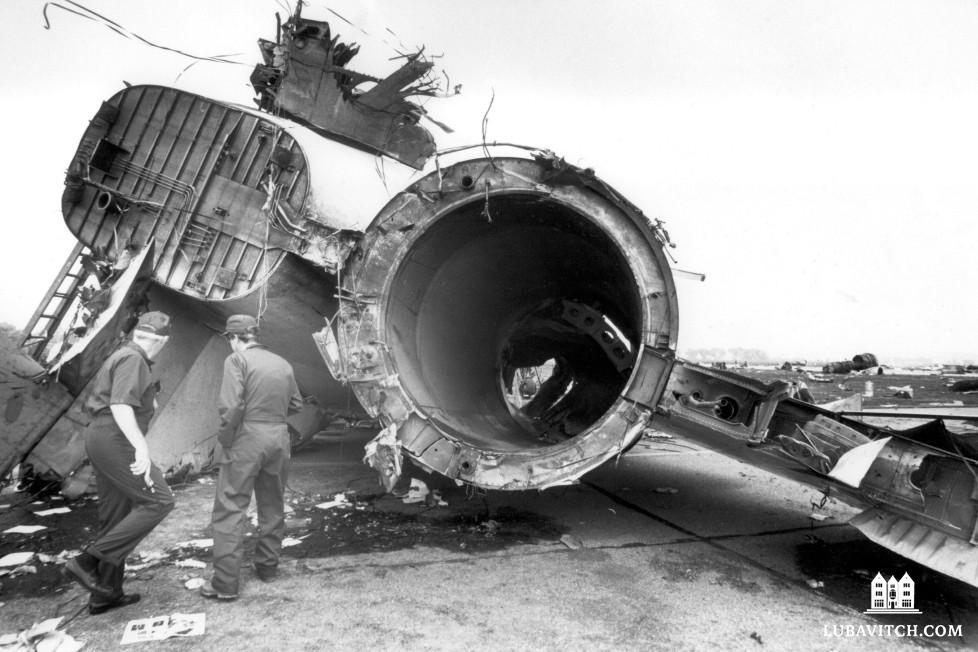
In Row 38, Richard tried to calm his young neighbor. He told Sruli about the slides that would come out of the emergency exits and showed him how to assume the brace position. Then, at the flight attendant’s suggestion, Richard told Sruli that they should switch seats so Richard could be in the aisle to help with evacuation. As the plane descended, people cried and prayed. Parents wrapped babies in pillows and blankets, hoping to protect them from the impact; seatmates held hands.
“Brace, brace, brace, brace!” At the crew’s command the passengers folded over, heads against the seat in front of them, hands protecting their heads. Sruli couldn’t move, even as Richard prompted: “You have to brace. Remember how I showed you?” Paralyzed with fear he sat bolt upright, his eyes squeezed shut. Moments before impact, Richard shoved Sruli down and threw himself on top of him, keeping him down, and probably saving his life. “I think those minutes were the last time in my life I ever felt afraid,” Yisroel shared.
At 4 o’clock p.m., Flight 232 met the runway traveling at 250 miles per hour. The plane’s right wing carved a ditch in the concrete, spilling fuel which was ignited by the friction. On impact, the aircraft broke into pieces, which tumbled in all directions over a mile-wide area. Entire rows of seats were thrown into the air, arcing through the summer blue sky before landing in the corn, or on the concrete. Some sections of the plane were consumed in flames.
The tail section, with row 38, the middle of row 37, and two jump seats, rolled and rolled. Yisroel recalls an incredibly loud noise, followed by an eerie silence. “I thought maybe this was death. Like if there was a waiting room for death, that’s where I was.” It seemed to last forever, but was soon replaced by what sounded like a snowplow ripping up grass as they came to rest in a field. Soon Sruli could hear a flight attendant telling people to unbuckle and leave. He watched as they helped each other up and walked over the debris, exiting through the gaping hole where the rest of the plane used to be.
Trapped beneath Richard’s body as he gasped his dying breaths, Sruli turned his head away. He saw flames from other parts of the plane. The smell was so terrible that it still haunts his most terrifying nightmares. Looking to his right he saw his arm was almost completely severed from his body.
The boy began to scream, “Thirty-five West Winona Drive!” His parents had taught him that if he found himself in trouble, he should tell people their home address and phone numbers. Now, as EMTs loaded him onto a stretcher in the middle of a cornfield in Iowa, the terrified boy screamed those familiar details over and over again.
A Mobile Counseling Center
Roughly eighty miles south of Sioux City, Rabbi Katzman, the young director of Chabad in Nebraska and South Dakota, had heard reports of a flight in trouble on the news. He took a call from Rabbi Yossie Dubrowski, a Chabad colleague from Tampa, Florida. The rabbi of Tampa’s Rodeph Shalom Conservative congregation, Rabbi Kenny Berger was on the flight with his wife Aviva, and two of their children, Avigail, 16, and nine-year-old Jonathan. Family and community were in distress. Could Rabbi Katzman travel to Sioux City to discover their whereabouts and status?
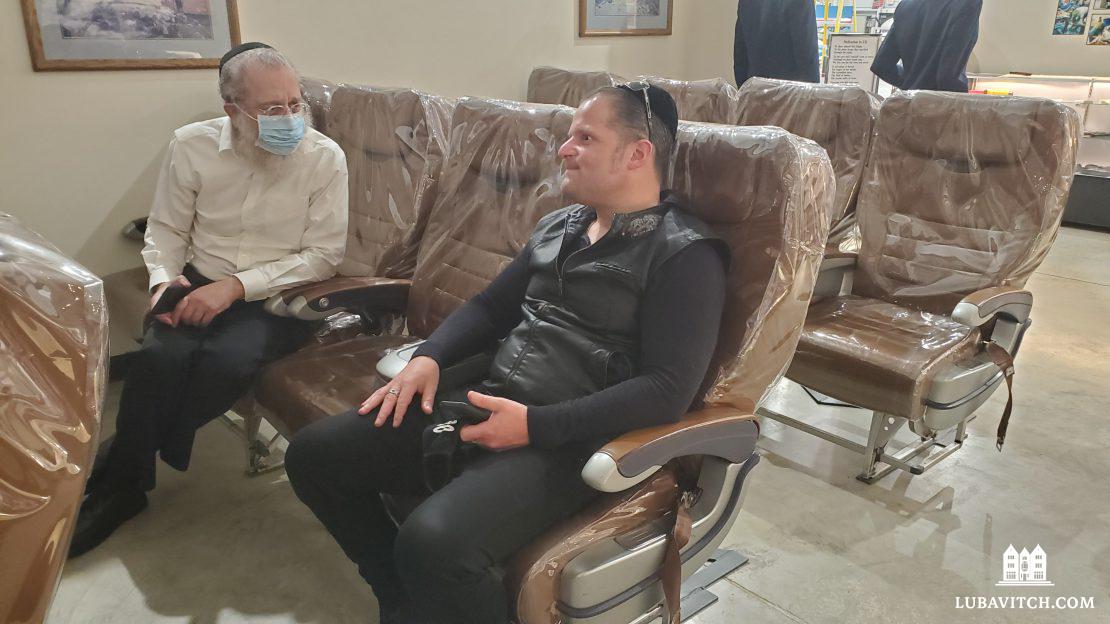
“I called a friend of mine, Mr. Mort Trachtenberg, got the keys to his luxurious mobile home, loaded it up with lots of food, Jewish books and toys, and drove out to Sioux City,” the rabbi shared with Lubavitch International. He didn’t know how long he would stay, or what he would find when he got there, but he drove directly to a Sioux City hospital and parked the Mitzvah mobile in front of the hospital.
Jim Sherman, spiritual leader of Sioux City’s Conservative community and a friend of Rabbi Katzman’s, met him there. A chaplain to the Omaha police department, Rabbi Katzman used his badge to gain access to the hospital, and the two began to search for the Bergers.
They discovered that both Kenny and Aviva had died in the crash. Jonathan had relatively minor injuries, and Avigail was unaccounted for. Then Jim discovered a necklace with the Hebrew letters spelling her name among the personal effects of a female Jane Doe who was critically injured and in a coma.
Soon the RV in the parking lot had become an unofficial counseling center. People seeking word of loved ones asked Rabbi Katzman to use his credentials on their behalf. “It took time to account for everyone, so people were tense, not knowing what the situation was. People stopped by to cry, looking for information or needing comfort,” he recalls.
“We prayed with many people, Jews and non-Jews,” Jim says. There were survivors who walked back into the airport, rented cars, or booked themselves on new flights and walked away with nary a scratch. Then there were men whose wives died in the seats next to them, parents who couldn’t find their babies in the wreckage, children, like Sruli, clinging to life by their fingernails.
Doctors had managed to stabilize Sruli’s arm temporarily. He would need complex surgery to allow him to get any use of the limb. His skull was fractured, his brain hemorrhaged–the neurosurgeon operated while he was awake for fear that the anesthesia would send him into a coma.
As Rabbi Katzman made his rounds in the hospital, visiting the injured, counseling family members and staff, another chaplain mentioned that there was a Jewish kid among the survivors. Sruli was in a sealed environment to protect his open wounds from infection. “The nurses would wheel me over to the window, and I would see my dad and the Plane Crash Rabbi in the parking lot near the RV,” Yisroel recalls. His parents had arrived in Sioux City by midnight on Tuesday.
Day after day, over Sruli’s month-long hospitalization, “the rabbi was outside with his RV in the parking lot. He walked into our lives and has been there for us ever since.”
Of the 296 people on board that day, 184 survived the crash. Avigail Berger lay in a coma for four weeks, but eventually recovered. Rabbi Katzman stayed connected with the Berger children and their family members who raised them after both parents died in the crash. He attended Jonathan’s bar mitzvah and other family Simchos.
Living with the Trauma
Two years after the crash, Sruli had regained ninety-seven percent functioning in his arm. He has many physical scars, but the emotional scars run deeper.
He lives with the trauma of Richard’s death every day, he says. The guilt and the smells and sounds of that tragic day are on constant replay in his mind. “One of the most terrifying nightmares I have on a regular basis is of us rolling and that smell,” he says.
Once out of the hospital, Sruli began attending a local yeshiva. His teen years were troubled–he struggled with opioids and methadone–but eventually he settled down, married and had two children. In 2010, he graduated as a doctor of psychology. Now sober, he established a suicide and overdose prevention and mentoring organization that provides therapy and support for teens at risk.
Revisiting the crash site, Yisroel and the rabbi said prayers and mourned the 112 who died that fateful day. Avigail Berger joined by phone. Then they made their way to the Flight 232 Museum, which had opened just for them (it is closed to the public due to COVID). Yisroel looked at a list of those who perished and pointed to Richard’s name. “He lost his life for me. His daughter grew up without a dad because of me.” “I have so much frustration, so much pain and anguish, but I have to be thankful and I have to have faith,” he says. “Thank you, G-d, for all the extra time I had, for my beautiful children and their mother, for my friends, and for all the people who, with blood, sweat, and tears, gave everything to save so many lives that day.”
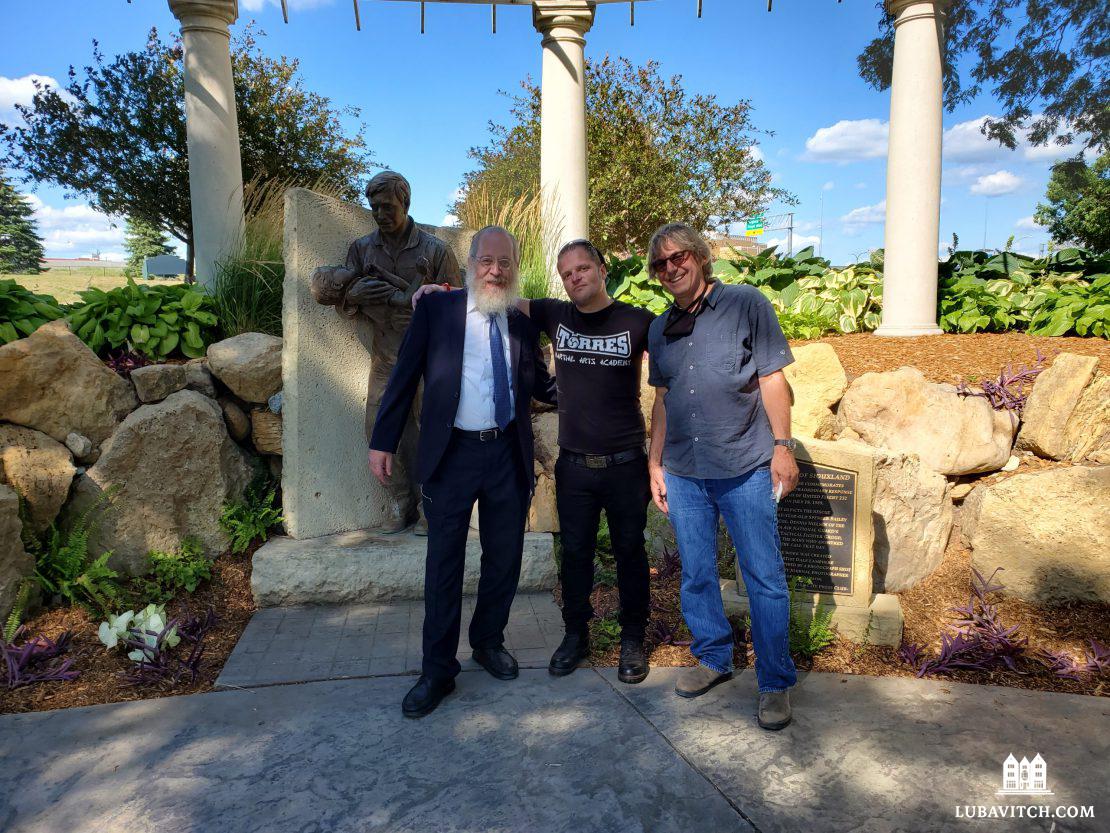
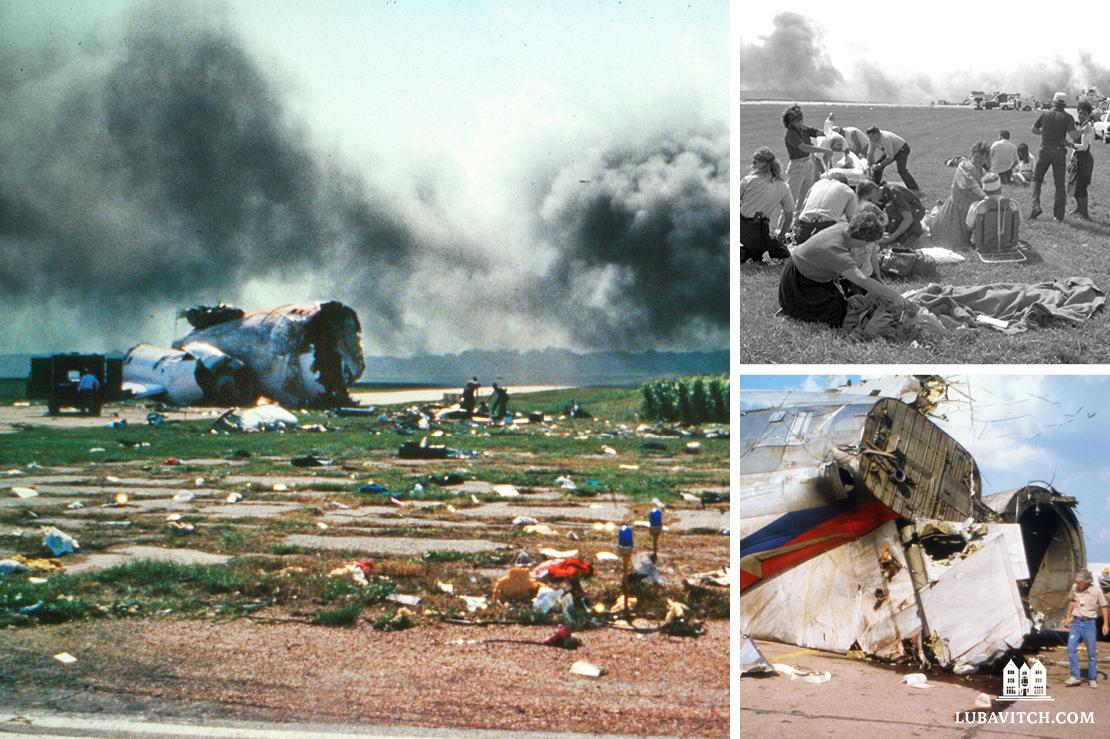
Eliezer
Wow!
Randi
I wish Sruli and all the survivors as well as the Remarkable Rabbis serenity.
Tova Medetsky
Oh my Gd! Thank you for saving him!
We loved that little Sruli who was on his way to our home to visit my 9 year old son !
We had moved from Denver to Phildelphia and the boys were going to spend time together .
That wasnt meant to be.
My husband traveled to the hospital in Sioux City to help out in any way he could.
I hope one day, Sruli and his wife and family will complete his trip and make it over to our home in rockland county so we can see each other once again!
i will get my son over here as well so we could spend some precious time together and in some way make up for the lost opportunity .
It would be amazing Sruli !
with love and Brachos!!
Sherri
What an amazing story of courage by all and for a 9 year old Sruli who was fortunate to have even lived. I am glad he eventually overcame the tests of life he faced and now has a family, life and career. I am sorry for all the loss and resulting effects. My prayers to all that were involved.